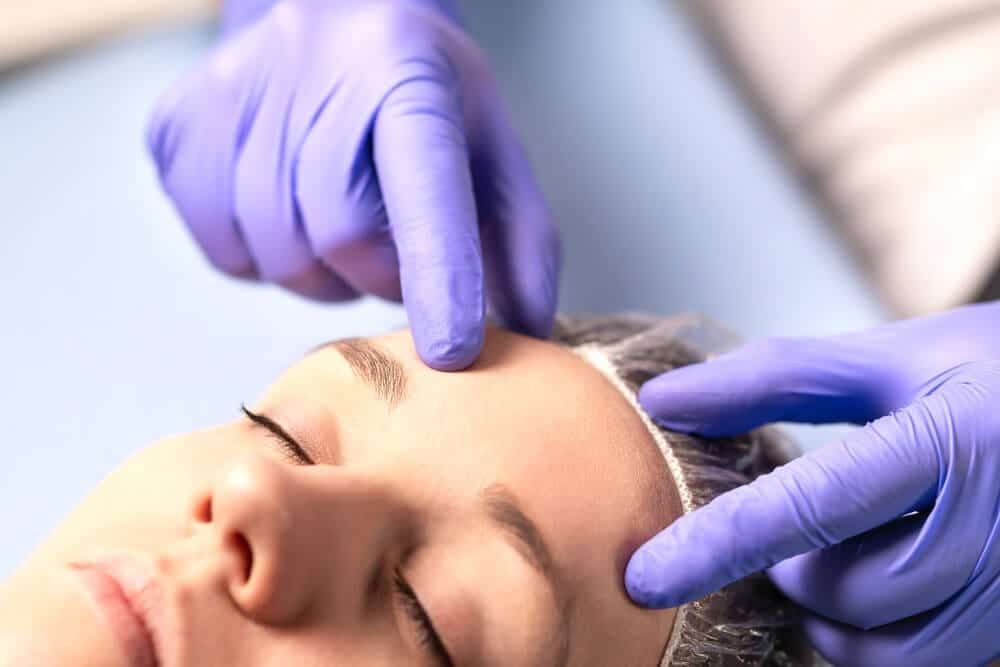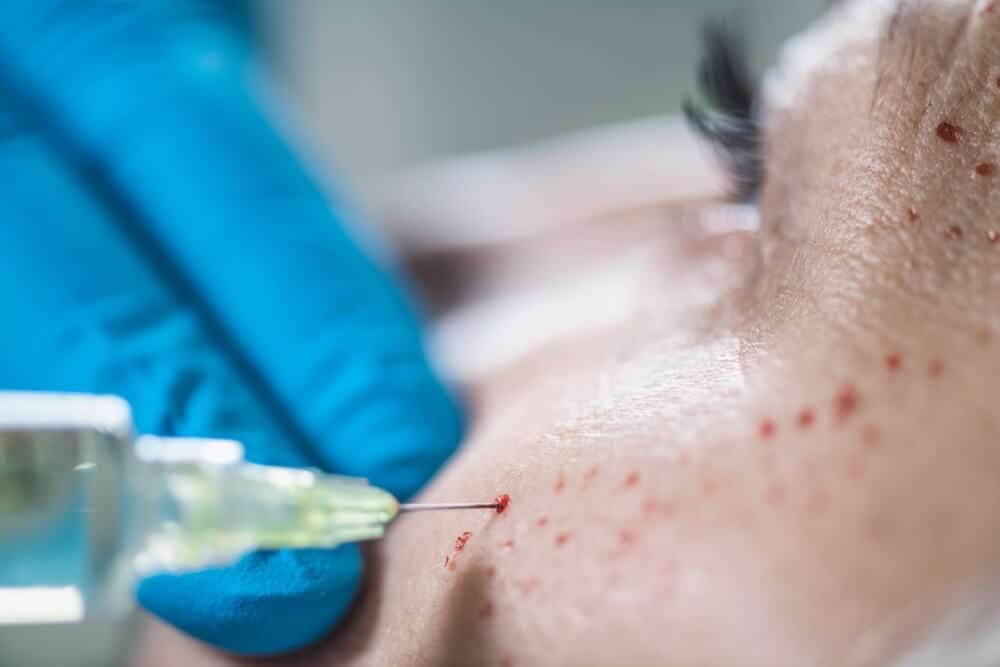As a provider of cosmetic dermatological procedures, practitioners like you always want to stay on top of the latest trends and up-and-coming procedures that your clients call you asking about. In order to do so in our ever-changing cosmetic dermatology landscape, it’s important for you to continue your medical education to learn about new treatment options that are on the market and in high demand. And that’s exactly what I’m here to help you do.
If you’ve found this blog post because you’re interested in learning about Platelet-rich Plasma (PRP) Facelift training or PRP Facial training, you’ve come to the right place. These new, minimally-invasive, and non-surgical procedures are becoming more and more popular with the general public because of the results they provide without having to go under the knife. They are also so well-loved because of the relative simplicity of having the treatments performed.
These rejuvenation options can help patients who have a variety of concerns that are common signs of aging, including:
- Grayer skin tones due to decreased blood flow.
- Vertical lines around the mouth.
- Skin that looks worn, tired, or droopy.
- Less smooth skin textures.
As a medical doctor and a provider of online and live Continuing Medical Education (CME) courses, I’m here to tell you everything you need to know about these new rejuvenation procedures that are in high demand and growing in popularity throughout the United States and offer PRP Facelift training and PRP Facial training. Whether you want to know about PRP Face Lift pros and cons, how long does the PRP Facelift last, PRP Facial side effects, or something else related to these new rejuvenation techniques, my medical training programs have the answer you need.
To learn more about my CME training options, which include online courses, live training, and blended learning options, visit my website and use my online chat feature to ask any questions you may have.

All About PRP Facelift Training
Men and women seek out this non-surgical rejuvenation procedure because of the many PRP facelift benefits. When you perform this procedure, you’ll need to follow these steps:
- Use Hyaluronic Acid Fillers to Beautifully Shape the Face
The first step of this minimally-invasive treatment is to inject hyaluronic acid fillers – such as Restylane® and JUVÉDERM® – into the face. The goal of this step is to provide your subject with great fullness and contours.
- Draw Your Client’s Blood to Isolate His or Her PRP
The next step of PRP Facelift training is to draw your patient’s blood. Then, spin it in a centrifuge to isolate the growth factors found in PRP. Typically, this step only takes about 10 minutes to complete.
- Inject the Patient’s PRP into His or Her Face
Once you’ve injected your subject’s face with hyaluronic acid dermal fillers and isolated his or her growth factors, you need to inject his or her platelet-rich plasma into the treatment area. Learning this technique is an important part of PRP Facelift training. Using your patient’s own blood is one of the biggest PRP Facelift benefits. PRP helps to increase blood flow to the face, thus eliminating bruising after the procedure as well as skin allergies and burnt skin. It also promotes quick and healthy healing. Platelet-rich plasma is one of the biggest positives when considering the pros and cons of a PRP Face Lift.
- Promote Healthy Recovery and Maintenance with the Use of Altar™
The final step in PRP Facelift training is educating your patients about the importance of using Altar™, a specialized skin therapy, after their sessions. This education is an important part of answering their frequent question, “How long does the PRP Facelift last?” The Altar skin treatment encourages the growth of healthy pluripotent stem cells which will promote healing after the treatment as well as long-lasting results.
How Long Does the PRP Facelift Last?
You may be wondering, “How long does the PRP Facelift last?” The answer is that the results are long-lasting and the procedure only needs to be repeated infrequently. This is one of the biggest PRP Facelift benefits and one thing that both providers and patients love when considering PRP Face Lift pros and cons.
PRP Face Lift Pros and Cons
As a practitioner considering offering this treatment, you are likely very curious about PRP Face Lift pros and cons and understandably want to learn about them before deciding to offer this treatment in your practice. Here is an overview of them.
- Positives:
-
- An outpatient, minimally-invasive, and non-surgical rejuvenation procedure.
- Great for patients who don’t want or aren’t eligible for plastic surgery.
- PRP Facelift benefits are greater than those achieved just by having hyaluronic acid fillers injected alone.
- No bruising and no downtime; your clients can immediately return to their daily activities.
- Long-lasting results.
- Negatives:
- More expensive than getting dermal fillers alone, which may limit your potential client pool. However, many patients who have the treatment performed feel PRP Facelift benefits are worth the financial investment.
- May cause redness in the face after the procedure.
- To achieve the most optimal results, your patients must continue the daily use of Altar. A client who doesn’t follow these daily aftercare instructions may feel they haven’t achieved PRP Facelift benefits and blame the procedure, and not their lack of post-treatment follow-through.
All About PRP Facial Training
It’s important to note that PRP Facial training is a completely different set of instructions from this procedure’s sister treatment, the facelift. Learning this procedure is unique because it is even less minimally invasive and doesn’t involve the use of dermal fillers like Restylane and JUVÉDERM.
When you take my CME course for PRP Facial training, you’ll learn how to perform these steps:
- Microneedling of the Face
The first step of this treatment is to use a dermal roller to perform microneedling. As you may already know, microneedling makes small punctures in the skin, which stimulates the body’s production of collagen to heal itself and promote the regrowth of healthier, more youthful-looking skin.
- Isolating a Patient’s PRP
Your next step will be to draw your client’s blood, spin it in a centrifuge, and isolate his or her platelet-rich plasma. As I mentioned above, this process is relatively fast.
- Injecting Platelet-rich Plasma in the Treatment Area
The final step in this treatment is to inject the PRP into the treated skin. These platelet-rich plasma injections promote an increase in blood flow, quicker healing, and healthier skin appearance.
If you are interested in offering this procedure, sign up for my PRP Facial training course.

PRP Facial Side Effects
One of the most beloved aspects of this rejuvenation procedure is that there are very few PRP Facial side effects. The known PRP Facial side effects include:
- Temporary redness at the treatment site.
- For some patients, issues around the eyes.
- Longer to realize results, because subjects must wait for the PRP to do its job.
Other than these, there are very few PRP Facial side effects, which is part of what makes this such a high-demand rejuvenation technique.
Sign Up for PRP Facelift Training or PRP Facial Training
Now that you have answers to the most common questions about these procedures, such as “How long does the PRP Facelift last,” you’re ready to take my CME courses.
If you’re ready to learn, you can sign up today and begin your CME training online tonight. To sign up, visit my website and use the live chat feature if you have any questions about the program.
